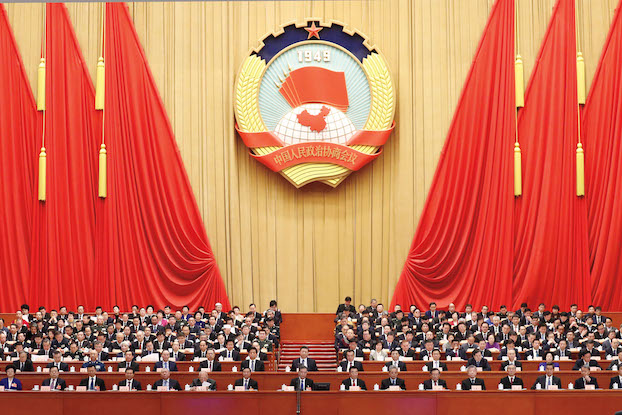This article is adapted from AQ’s latest issue on China and Latin America | Leer en español
Latin America is a region of critical interest to China, but obstacles to further engagement — new and long-standing, at home and abroad — will temper Chinese activity in the region in the coming years. In fact, a review of on-the-ground developments in Latin America already suggests some moderation in levels of Chinese activity, whether by Chinese investors, or at the behest of Latin American governments, which in some cases are seeking ties with a wider range of economic partners.
Although trade remains dynamic, Chinese foreign direct investment and finance is already slowing somewhat in Latin America. Mergers and acquisitions and greenfield projects dropped from a record level of $17.5 billion in 2017 to just $7.6 billion in 2018, according to the Global Development Policy Center. Greenfield projects amounted to just $1.6 billion in 2018, the lowest level since 2006. And Chinese policy banks — China Development Bank and China Export-Import Bank — issued comparatively low levels of finance to Latin American governments over the past two years.
This decline in activity is attributable to a range of factors, some of which have inhibited Chinese activity in the region for decades. Latin America is cast as a “land full of vitality and hope” in China’s official policy, but Chinese investors have for many years viewed the region’s distance from Asia as prohibitive—Buenos Aires, Montevideo, and Santiago, the farthest capital cities from Beijing, average almost 12,000 miles. Others see the region’s regulatory environments and bidding processes as exceedingly complex or taxing. As Zuo Pin of the Shanghai International Studies University noted in the Chinese journal Guoji Guancha in 2015, Latin America is a remarkably challenging environment for Chinese investors.
The region’s perceived complexity is exacerbated by the frequent failure of Chinese companies to practice due diligence in the region, leading to unforeseen conflicts and resulting project delays or cost overruns. The examples are numerous, such as in Bolivia with El Sillar roadway maintenance and protests against the Rosita Dam project for its lack of prior consultation with affected communities. Corruption allegations have also impacted Chinese projects in Latin America, including a Querétaro railway concession in Mexico and two hydroelectric dams in Argentina.
Venezuela has also become a regular source of stress for Chinese policymakers and the many banks and companies operating there, even as Beijing maintains ties to Nicolás Maduro’s government. China extended another $5 billion loan to Venezuela in 2018, but simultaneously ended a critical grace period for Venezuela on debt payments. The latter was interpreted as a sign of Beijing’s growing impatience with Maduro’s mismanagement of economic affairs. National Assembly leader Juan Guaidó’s claim to the Venezuelan presidency presents yet another challenge to Chinese decision-makers, particularly if a new Venezuelan government seeks to restructure outstanding debt to China.
With Venezuela and some other partners in mind, some in China have lamented the high-risk nature of opportunities available to Chinese companies in Latin America. As Chinese Academy of Social Sciences scholars Wang Yongzhong and Xu Peiyuan said in a 2018 journal article, as “a latecomer in the international investment arena, (China) is forced to allocate capital to countries and regions with higher risks.” Prospective projects aren’t always attractive or even feasible, especially as China seeks to avoid the sort of reputational fallout that has come of deals gone wrong in Sri Lanka and elsewhere in the world.
Many Promises, Fewer Deliveries
For this and other reasons, China’s state-owned enterprises (SOEs) and banks end up delivering on only a fraction of the many projects they consider. China has expressed interest in about 150 transport infrastructure projects in Latin America and the Caribbean since 2002, for example, but as of last year, only about half of those had entered some phase of construction.
Many, like the bi-oceanic Railway, which would span the continent from Peru to Brazil at a cost of more than $50 billion, haven’t moved beyond the conceptual phase.
Meanwhile, new potential obstacles to engagement are emerging. Further restrictions on capital outflows from China could dampen infrastructure and other activity in Latin America, for example. Although China’s foreign reserves have grown somewhat in recent months, probable caps on available credit will force Chinese banks and SOEs to choose overseas projects more carefully. Despite efforts to augment China-Latin America ties and the region’s new-found role in the Belt and Road Initiative (BRI), Chinese companies and banks are inclined to pursue opportunities closer to home, where costs are lower and networks are well-established.
Slowing Latin American demand for Chinese finance and investment might also moderate activity in the coming years. Traditional recipients of Chinese state loans, like Ecuador and Argentina, are unlikely to substantially increase levels of sovereign debt to China even if the terms are attractive. Many others are feeling considerable pressure from Washington to avoid major deals with China, especially on projects that have perceived security implications for the U.S.
China will of course continue to engage with Latin America in impactful ways, even if it adopts a more mindful approach to investment in the region. Latin America still figures prominently in China’s energy and food security calculus and as a key market for increasingly high-value-added Chinese exports. Regional trade with China hit record levels in 2018, for both imports and exports. China is also forging new economic ties with a handful of countries in Central America and the Caribbean, having recently secured their diplomatic recognition. Chinese companies featured prominently in Panama’s infrastructure development plans, for example, following President Juan Carlos Varela’s decision to cut ties with Taiwan in 2017.
Also, although Latin America presents clear challenges for some companies, others have experienced resounding success in the region and are looking to engage more extensively. At least two Chinese SOEs have decided to expand their mining operations in Peru. Others, such as State Grid and China Southern Power Grid, have established a striking presence in national power networks. Chinese companies have also been remarkably successful in negotiating port deals in Latin America and the Caribbean, with about 20 port projects in progress or already completed thus far. These and other deals are thought to achieve a range of Chinese political and economic objectives, while also presumably supporting regional development objectives.
Beyond Economics
Chinese activity in other-than-economic areas is also at an all-time high. China’s diplomatic outreach in Latin America, whether through technical cooperation or other forms of people-to-people connectivity, has boomed in recent years. These newly developed networks will no doubt strengthen China-Latin America ties, even though many of these efforts are still relatively ad hoc and uncoordinated, according to interviews with Latin American officials.
Nevertheless, Latin American nations shouldn’t count on major infusions of Chinese capital over the next decade, especially of the counter-cyclical variety. Chinese investors filled a critical void in the region during the commodity bust, and China was largely responsible for moderate economic growth in Latin America in the aftermath of the 2008 global financial crisis, but limitations and leanings could push Chinese companies into more predictable or high-yielding markets, or toward closer and more BRI-relevant ones. This is especially the case as Chinese companies become increasingly competitive with international counterparts.
Amid growing concern about China’s extensive footprint in Latin America, whether from Washington or elsewhere, it is incumbent upon officials throughout the hemisphere to take stock of the extent and pace of China’s on-the-ground activity in Latin America, noting that rhetoric doesn’t always match reality. Despite still-strong trade ties and effusive Chinese policy pronouncements, China’s investors are in many cases setting a more moderate course in Latin America, and will likely do so for the foreseeable future.








